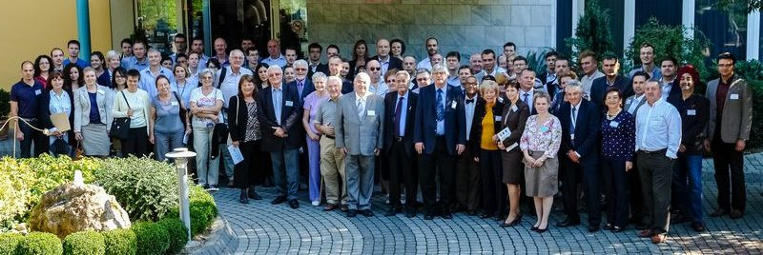First European Section Meeting of IACS in Balatongyörök, Hungary, October 8-11, 2015

Mission of the European Section of International Academy of Cardiovascular Sciences (IACS-ES)
The general mission of IACS is to promote cardiovascular science, scientific education and interaction of scientists.
In Europe, there are several scientific organizations in the cardiovascular field, such as the national cardiological societies within the European Society of Cardiology (ESC) with its 12 Working Groups, and the International Society for Heart Research – European Section (ISHR-ES). However, the European Section of IACS has a distinctly different mission than those above mentioned organizations. The goal of IACS-ES is not to compete but rather to cooperate with other scientific organizations in the field, focused on the aspects that are not completely covered by other societies.
According to this idea – in addition to the general commitment to promote high quality cardiovascular science in Europe – the IACS-ES has four additional main specific aims.
- Since scientific background, traditions, training and funding vary considerably depending on different regions in Europe, the European Section of IACS-ES would focus on promoting cardiovascular science in European countries, where the conditions for scientific excellence including research, training and funding are less well-established or supported. Such regions of Europe are: Central and Eastern Europe, the Balkan countries and some countries in Southern Europe. To achieve this goal, the IACS-ES would like to help organizing meetings in these regions of Europe encouraging the participation of top scientists from all over the world. Also, the IACS-ES would like to encourage and acknowledge the contribution of scientists from other parts of Europe and the world who play a significant role helping to promote cardiovascular sciences in the so far less successful countries in Europe. The IACS-ES would consider it as a priority to encourage young scientists, postgraduate or PhD students to participate in the meeting organized by IACS via offering travel grants and young investigator and poster awards. In addition, the IACS-ES would like to help organizing scientific summer schools for young scientists and students to get familiar with modern experimental techniques and build up scientific connections throughout Europe.
- Since some of the cardiovascular meetings do not provide a sufficient basis for interaction between the basic science and clinical communities, the IACS-ES would focus on encouraging and promoting direct and strong interactions between basic scientists and clinical cardiologists by putting together experimental and clinical presentations in joint sessions providing a platform for common discussions.
- High-tech industry including pharmaceutical industry is not evenly distributed in Europe. It is relatively well-developed in Western and Northern Europe and it is less-developed in Eastern-Central, Southern Europe and in the Balkan region. Therefore, one important goal of IACS-ES is to provide direct interactions for basic scientists and clinical cardiologists with industrial representatives from all over European countries. In addition, it is also important to provide a forum for companies operating in the less-advanced regions of Europe helping interactions with leading scientists from all over the world with scientists working in those regions. The latter may help those companies to increase the success of their business and also bring better opportunity for local cooperation to enhance their innovation strength and providing experts for their potential needs.
- Since IACS-ES closely interacts with other sections of IACS worldwide, it can help to provide a wide range of interactions between cardiovascular scientists in Europe and the rest of the world. In this respect, IACS-ES can facilitate participation of European scientists in meetings outside Europe on a mutual basis. Also, the official Journal of IACS, the “CV Network”, which contains important information about the life of the IACS – including a meeting calendar - can be distributed to the national cardiological societies who would take part in the Academic Membership program of the IACS-ES. In this way, the “CV Network” can provide useful information for national cardiological societies in Europe with their several thousand members, and IACS-ES can also inform the members of IACS worldwide regarding main ongoing activities in Europe including meetings.